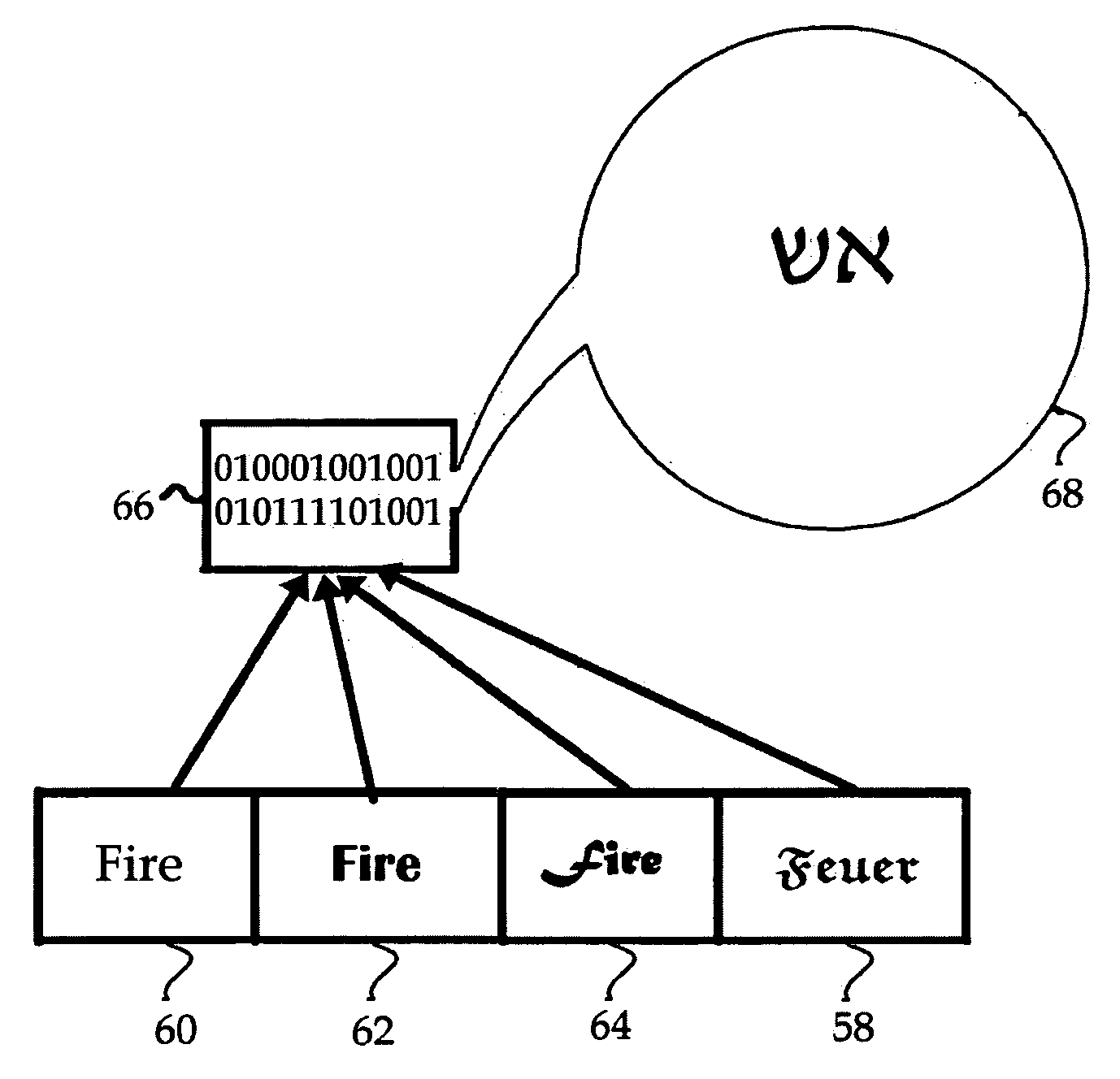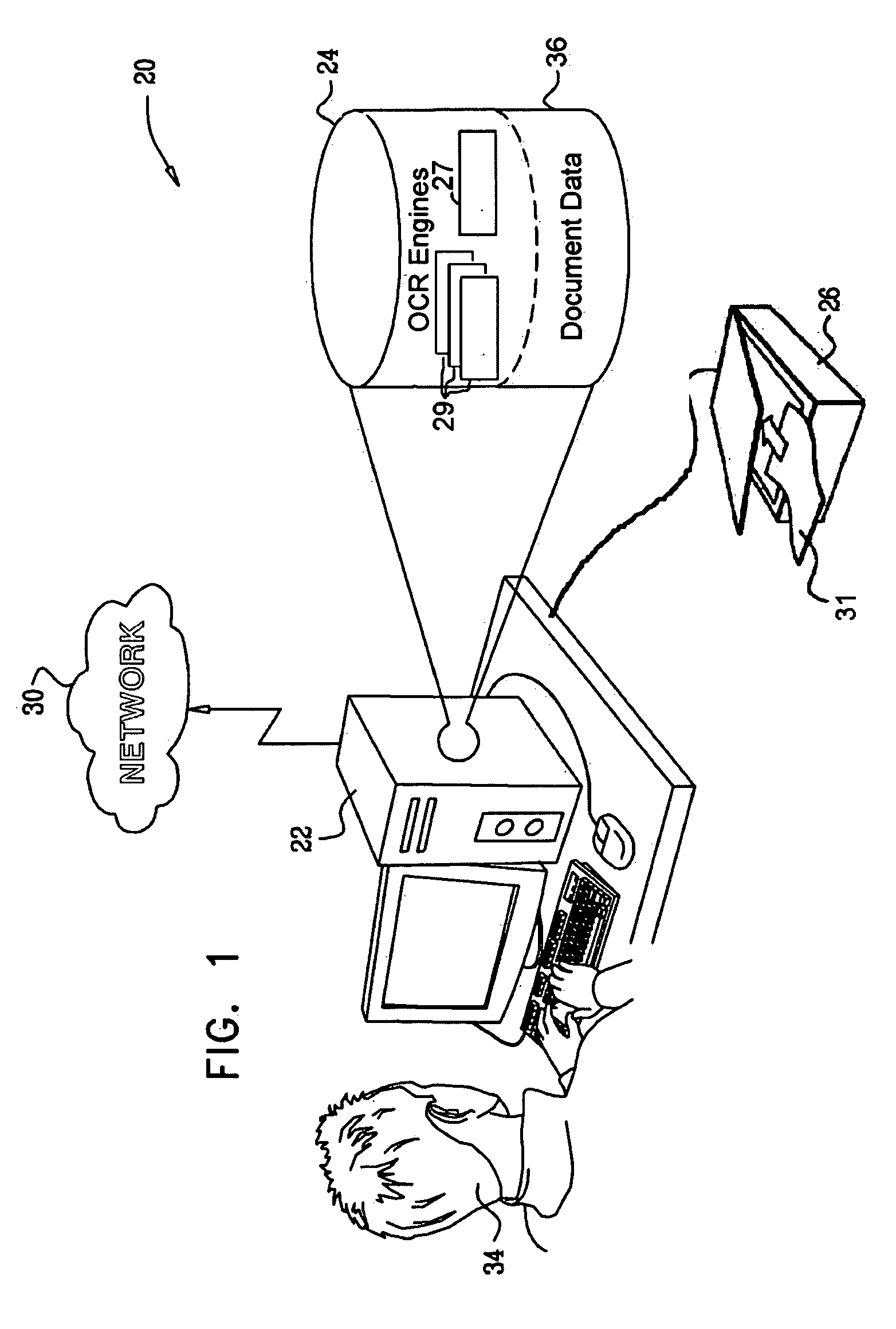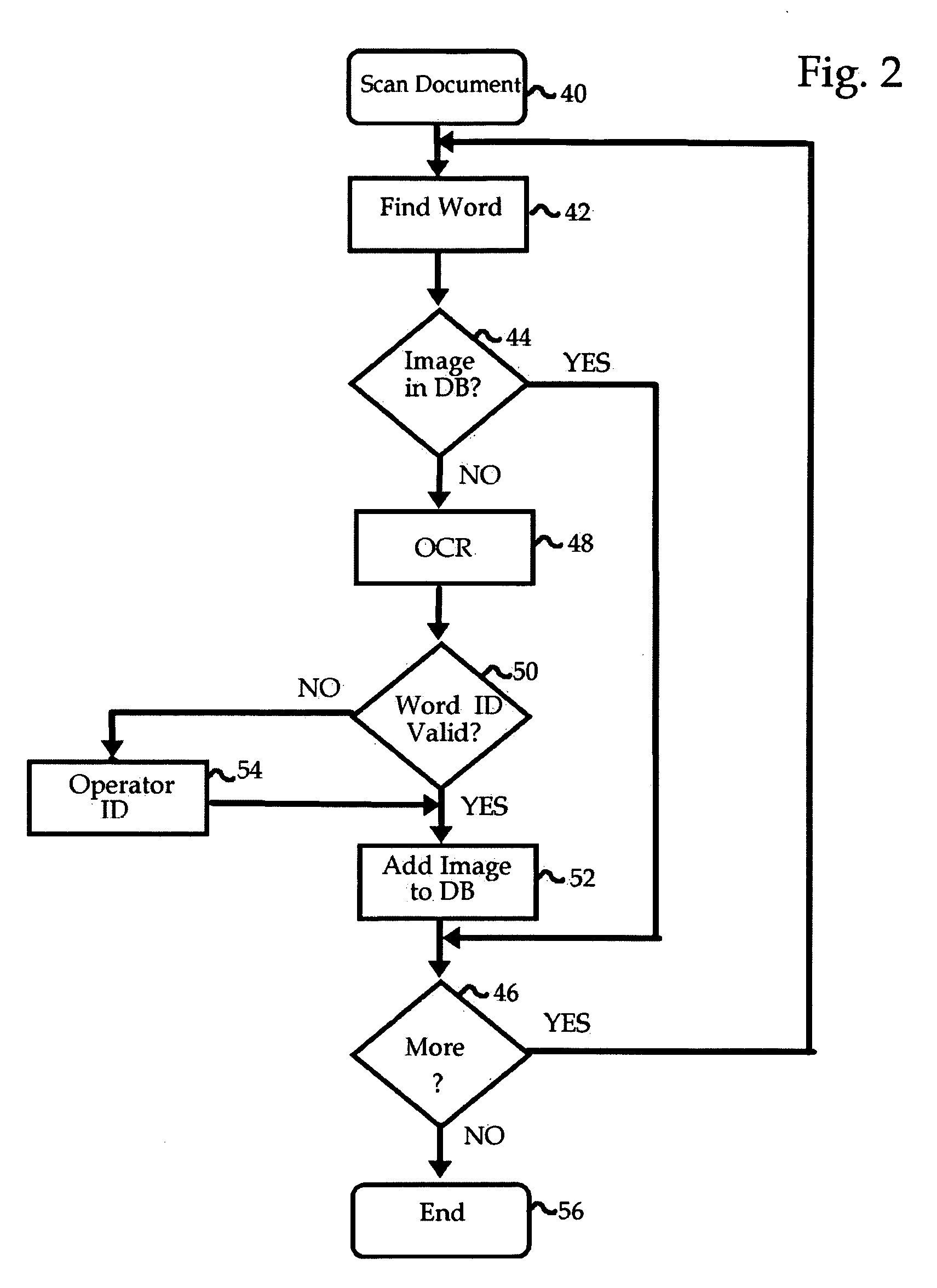OCR of books by word recognition
a word recognition and optical character technology, applied in the field of optical character recognition, can solve the problems of libraries and archive centers that must either tolerate low-quality data or no
- Summary
- Abstract
- Description
- Claims
- Application Information
AI Technical Summary
Benefits of technology
Problems solved by technology
Method used
Image
Examples
embodiment 1
Alternate Embodiment 1
[0045]Reference is now made to FIG. 4, which is a high level flow chart of a method for image-to-text processing in accordance with an alternate embodiment of the invention. Many of the process steps in FIG. 4 are identical to those of FIG. 2. The details are not repeated in the interest of brevity. This embodiment employs adaptive character recognition training and word recognition training to increase the accuracy of word identification, and to reduce the need for operator assistance.
[0046]If decision step 50 has resulted in a determination that the identification of the current word by conventional OCR is invalid, control proceeds to step 70. The current word is marked for adaptive word recognition training. At the conclusion of the adaptive word recognition training, the current word is rescanned, as described in step 48.
[0047]Control now proceeds to decision step 72, where it is determined if word recognition training and rescanning have resulted in a vali...
PUM
 Login to View More
Login to View More Abstract
Description
Claims
Application Information
 Login to View More
Login to View More - R&D
- Intellectual Property
- Life Sciences
- Materials
- Tech Scout
- Unparalleled Data Quality
- Higher Quality Content
- 60% Fewer Hallucinations
Browse by: Latest US Patents, China's latest patents, Technical Efficacy Thesaurus, Application Domain, Technology Topic, Popular Technical Reports.
© 2025 PatSnap. All rights reserved.Legal|Privacy policy|Modern Slavery Act Transparency Statement|Sitemap|About US| Contact US: help@patsnap.com



